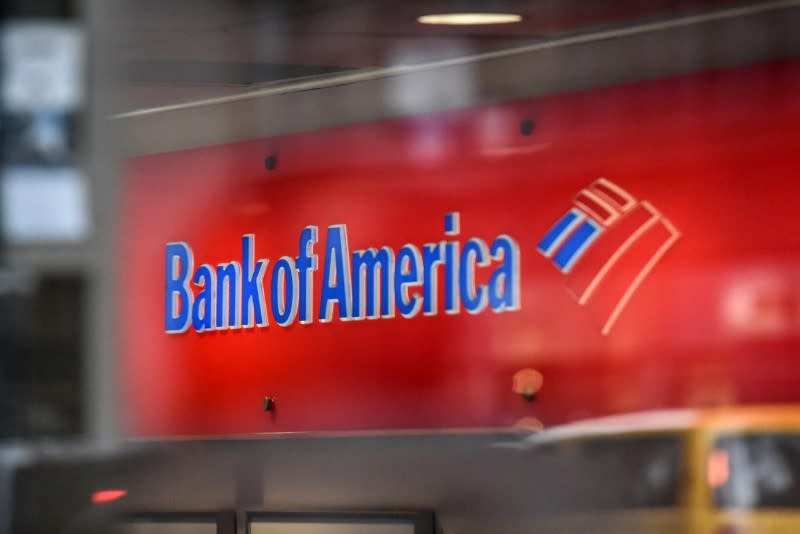Apps are the new bank branches and tellers
Deposits have been flowing out of regional banks and into America’s biggest financial institutions like JPMorgan Chase (JPM), Bank of America (BAC), and Wells Fargo (WFC). There are myriad reasons for the shift, like higher interest rates, as the Wall Street Journal noted, but for consumer deposits, one factor gaining significance is how good a bank’s mobile app is.
In the past, branch locations made or broke a bank’s utility for many customers, as bank business had to be done in person.
At banks that have a full suite of mobile tech, however, visits to brick-and-mortar locations are going down. At Wells Fargo, for instance, branch visits in the first quarter of 2018 were down 4% from the previous year. Meanwhile, digital transactions are up 13%. At JPMorgan Chase, mobile customers grew 13% year over year in the first quarter while branch locations were down 3% as 140 bank locations closed.

On an earnings call in January, Wells Fargo’s CFO John Shrewsberry pointed to customers’ ability to bank from home in response to a question about closing branches.
“I would say this big investment in digital capability that allows people to bank from anywhere, including opening accounts and applying for and having credit granted and deposit taking, eases the burden [on having lots of branches],” Shrewsberry said.
The importance of digital banking
Today, the act of checking a balance, sending money to someone, or even cashing a check can be done anywhere, from the comfort of your own phone – if your bank has invested in the technology.
If it hasn’t, that’s a problem.
According to Bankrate, 63% of adults who use a smartphone have at least one financial app, and 7 in 10 of those who do use them regularly. The most common app? A person’s bank.
Robert Barba, a senior analyst at Bankrate, told Yahoo Finance that geography is still why people choose one bank over another in general, but noted that the technological aspect has changed the landscape.
Banks and financial institutions, with their many tentacles that grab various parts of your life from bill payments to linked accounts and direct deposit, are notoriously hard to leave, but hot new features from one bank could make a difference.
“I don’t know a mobile app is going to attract you, but it might keep you, or send you running,” he said. “I don’t think it’s an attraction point but it’s a retention case. If you’re envious of your friends who can deposit checks, or if you move, you’re going to leave. If you like the app, that’s a reason for you to say.”
One major feature that cut down on bank visits is “remote deposit capture,” the ability to deposit a check with a smartphone.
“That’s the runaway success,” said Barba. “It’s the most practical way of replacing a branch visit.”
Some smaller, regional banks have been unable to provide this service, without the technology budget of the big players. So if a customer moves away, they can’t be remotely serviced if they want to stay, even if they’re willing to reimburse ATM withdrawal fees.
(This happened to me, incidentally, moving from New England to New York. I had to leave Citizens Bank (CFG) because they elected not to invest in mobile technology. Apparently they have it now.)
Traditionally, Barba said, big banks struggled in JD Power rankings with customer satisfaction. But in the last few years, they started to do better thanks to their mobile tech. “These big banks have big tech budgets,” he said.
Even if a regional bank has an app that can perform tasks like mobile check deposit, the bar is really high when it comes to expectations, pushed up by consumers’ everyday experiences with Google, Apple, and other sleek Silicon Valley tech. According to Barba, a customer isn’t necessarily comparing Chase to Bank of America, but across their entire digital experience.
Wells Fargo’s head of digital products for Virtual Channels, Katherine McGee, told Yahoo Finance that the bank is working on a “Control Tower” feature that aims to provide a survey view.
“Users will be able, for example, to see virtually all the places their Wells Fargo cards and accounts are connected — from personal finance apps and websites, to digital wallets, retail merchant sites, and third parties,” she said.
Wells Fargo and other banks have cardless ATMs, piggybacking on the technology in their phone apps.
Other banks, like Bank of America, have incorporated new features in conjunction with ATMs that pre-enter info so all a customer has to do is type a pin to get money.
For a smaller bank, however, the difference in cost between having a bunch of branch locations versus developing an app are pretty favorable. Development of an app may not be cheap, but it pales in comparison to the cost of a network of a few thousand bank branches.
To wit, in the past two years, according to a 2017 study by consulting firm Celent, 2,600 financial institutions have added mobile check deposit, putting the tool in the hands of an estimated 80 million people.
ATM integration may still be tougher without a proprietary network, but ATM networks like AllPoint partially alleviate this.
So far, this digital competition factor has worked for online banks, but Barba says that online customers aren’t usually as happy as their brick-and-mortar counterparts. For some, the old real estate is still better.
—
Ethan Wolff-Mann is a writer at Yahoo Finance. Follow him on Twitter @ewolffmann. Confidential tip line: FinanceTips[at]oath[.com].
There’s now clear evidence that anti-poverty programs like welfare and Social Security work
People are taking Equifax to small-claims court — and winning
Equifax reveals how many SSNs, credit cards, and passports were hacked
